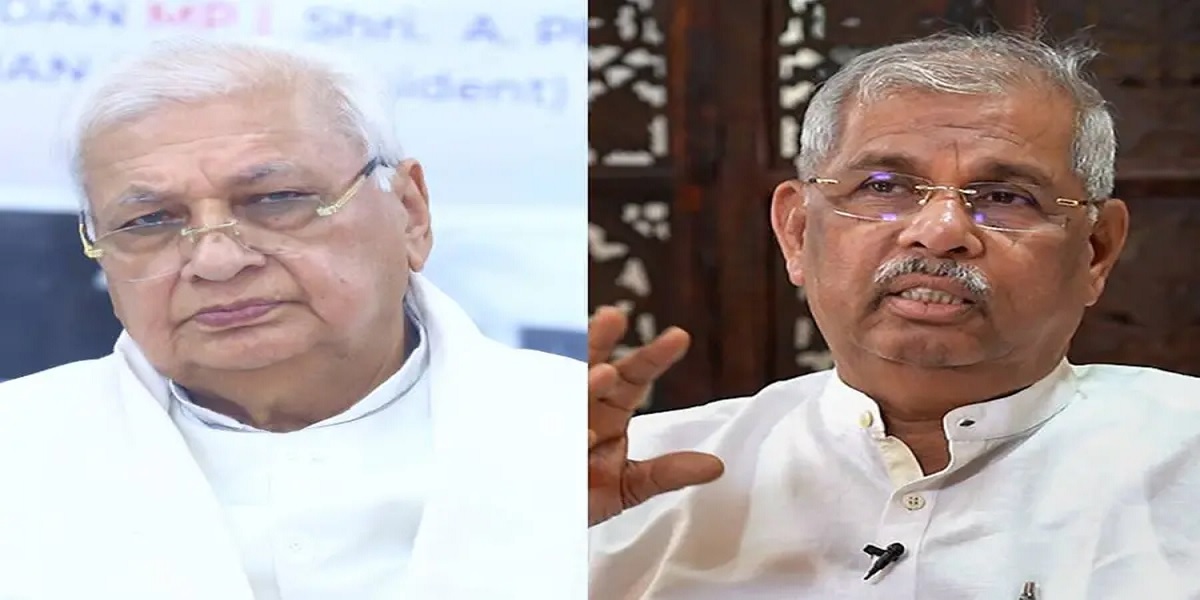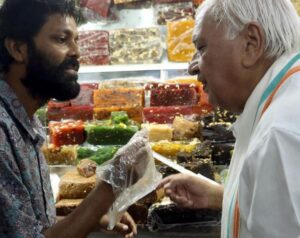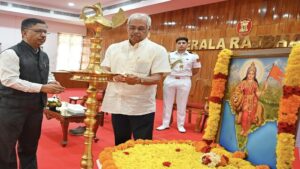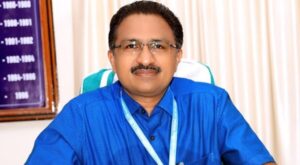Though both governors are cut from the same ideological fabric, the style, scale, and political impact of their actions are beginning to look very different.
Published Jul 08, 2025 | 2:47 PM ⚊ Updated Jul 08, 2025 | 2:47 PM

Though both governors are cut from the same ideological cloth, the style, scale, and political impact of their actions are beginning to look very different.
Synopsis: The RSS often claims that Kerala has the highest number of shakhas in the country. Yet, even after decades, they haven’t achieved significant political victories here. They’re not even a major political player. Both Arif and Arlekar are fully aware of this — but they’re simply doing the job assigned to them.
For five years, Kerala witnessed a bruising, almost unrelenting confrontation between the state government and the then-Governor Arif Mohammad Khan. What began as constitutional disagreements soon spiralled into a war of ideologies, street protests, and headline-grabbing flashpoints.
Many hoped that the change of guard at Raj Bhavan in January 2025, with the arrival of Rajendra Vishwanath Arlekar, might signal a cooling-off period. But what Kerala got instead was not a pause, but a shift in tone, with the fight taking new and perhaps even more ideologically loaded forms.
Khan, a former BJP leader with a history of moderate public posturing, often framed his battles as constitutional interventions. Arlekar, a staunch RSS loyalist, has brought in a more aggressive Hindutva symbolism into the state’s political theatre.
If Khan’s controversies mostly revolved around university appointments, Arlekar’s tenure began with a symbolic flex, reversing a state government decision on his first day and reinstating officers loyal to his predecessor.
And now, with the latest flashpoint over the Bharat Mata image at Kerala University’s Senate Hall, the ideological confrontation has entered a new phase—moving from governance to symbolism, from files to flags.
Though both governors are cut from the same ideological fabric, the style, scale, and political impact of their actions are beginning to look very different.
When South First contacted author and political commentator Paul Zacharia, he remarked, ”Both governors were sent to Kerala with a mission — and they are carrying it out. Arif Mohammad Khan comes from the political landscape of Uttar Pradesh, and Arlekar from Goa — so naturally, their styles differ.
I believe both are quite comfortable here in Kerala, even though they are on a political assignment to support the BJP. This state is less politically violent, and they know well that the BJP is unlikely to make any major political gains here. But they still try to make controversies into talking points.
Take the Bharat Mata portrait issue — many neutral observers might wonder why anyone is opposing it. That’s exactly the point: to spark confusion and discussion.
Unlike in Tamil Nadu, Kerala hasn’t taken a confrontational political stance against the Governor. People here aren’t reacting seriously.
The RSS often claims that Kerala has the highest number of shakhas in the country. Yet, even after decades, they haven’t achieved significant political victories here. They’re not even a major political player. Both Arif and Arlekar are fully aware of this — but they’re simply doing the job assigned to them. That’s all.”

A halwa shopkeeper giving sweets to the former governor
During the tenure of Governor Khan, Kerala witnessed several dramatic, high-pitched political confrontations and student protests—but one of the most unforgettable, intense yet unexpectedly heartwarming episodes unfolded in Kozhikode.
In December 2023, the Governor embarked on a controversial visit to Calicut University amid escalating tensions with the SFI, which had vocally opposed him over alleged attempts to saffronise university campuses. The SFI declared that he would not be allowed to set foot on the campus, staging strong protests even before his scheduled appearance.
On the day of his arrival, Khan stayed at the Calicut University guest house while a section of students, led by SFI state secretary PM Arsho, unfurled protest banners on campus. Though the police initially removed them, the banners were later reinstated by student leaders.
The Governor, angered by what he saw as leniency towards the protestors, publicly criticised the police for allowing such demonstrations within the campus premises.
Unfazed by the backlash, Khan took a bold step the following morning. In a defiant move, he left the guest house and headed to the heart of Kozhikode city—SM Street—refusing even police escort at first, though a heavy security presence followed to manage the situation. His visit was initially expected to be met with more resistance, but what unfolded surprised many.
As he walked through the iconic SM Street, known for its vibrant local vendors and sweet shops, the Governor was met not with hostility but with warmth and admiration. Shopkeepers, schoolchildren, and passersby welcomed him with smiles, handshakes, and requests for selfies. The atmosphere turned unexpectedly cordial, with scores of locals gathering to greet him.
The Governor, visibly touched by the spontaneous show of affection, remarked that he would forever remain grateful to the people of Kerala for their enduring warmth and respect—even during politically charged moments. By noon, he left the street, having transformed what could have been a volatile protest into a moment of connection with the public.
Despite intense opposition from student groups and a hostile political climate, this visit to Kozhikode became a rare chapter in Kerala’s political history—where a tense standoff gave way, albeit briefly, to gestures of mutual respect on the streets of a politically vibrant state.
Many political experts then opined that if any untoward incident had occurred during his visit to Kozhikode, he would likely use it to gain political mileage. He was even seen as risking his safety in search of such an opportunity. However, both the SFI and other opponents refrained from creating any disturbance during his public interactions.
Otherwise, the BJP would have certainly highlighted the incident and used it to criticize Kerala. The people of Kozhikode, however, handled the situation very wisely.

Jawaharlal Nehru wrote in The Discovery of India that Bharat Mata is not the property of any one group – she belongs to all Indians, across caste, region, and faith.
In Kerala, student organisations—especially the SFI—have historically led the charge against what they see as the Governor’s overreach. When South First reached out to SFI state secretary PS Sanjeev, he said the organisation would continue to resist what it considers politically motivated actions by the Governor.
”We will not allow the Governor to act like this without resistance. Raj Bhavan will have to plan an exit strategy before any public appearance. We also want to remind Mr. Governor that Raj Bhavan is not RSS’s inherited property,” he said.
Critics argued that the particular version of the image endorsed by Arlekar is closely tied to RSS ideology. While there are many artistic renditions of Bharat Mata, the one being used in official settings carries political undertones. Detractors point out that this image is not a constitutionally recognised national emblem, and promoting it in a secular constitutional office risks politicising the Raj Bhavan.
A KSU leader from Thiruvananthapuram told South First that symbols with religious or ideological affiliations have no place in state-sponsored events. “The Governor’s role is to remain above political divisions. Personal beliefs or ideological affiliations, especially those rooted in RSS culture, should not dictate constitutional conduct.”
Political analyst Nandagopan S from Kochi weighed in on the growing tension, distinguishing Arlekar and Khan.
”Arif Khan spent much of his tenure in open conflict with the state government. He was not only confrontational but also actively attempted to derail the state’s governance mechanisms, including withholding assent to legislation—forcing the government to approach the Supreme Court.
If Arlekar now adopts a similar combative stance, though over cultural rather than legislative issues, it sets a worrying precedent.’
The nature of discord has shifted—from Khan’s administrative and legal stand-offs with the government to Arlekar’s cultural assertions that carry ideological undertones. While their approaches differ—one legal and confrontational, the other symbolic and ideological—the result is the same: a growing rift between the Governor’s office and the elected state government. Many now worry whether the Governor’s post is being turned into a political instrument rather than a constitutional one.” he told South First.
Shivaprasad, the state President of SFI, criticised the Governor’s actions, calling them a deliberate move to promote Hindutva ideology under the banner of cultural nationalism. Speaking to South First, he said, “We have no objection to Bharat Mata being revered as a spiritual or cultural symbol in temples or private settings. Our protest is against the unconstitutional effort to introduce RSS-aligned imagery into official events and educational spaces.”
Shivaprasad compared the current Governor to his predecessor Khan, accusing both of advancing the RSS agenda—first through appointments, now through symbolic gestures like promoting Bharat Mata.
“This is a calculated attempt to inject communal symbols into public institutions, and Kerala will resist it,” he said.
In response, ABVP National Secretary Shravan Raj accused SFI and the CPI(M)-led government of politicizing the issue for media attention, calling Bharat Mata a symbol of national unity and the controversy a diversion from governance failures.

Kerala University Vice Chancellor Dr. Mohanan Kunnummal suspended Registrar K.S. Anil Kumar for allegedly issuing a notice to cancel the event.
In a move reflecting Governor Arlekar’s assertive stance, Kerala University Vice Chancellor Dr. Mohanan Kunnummal suspended Registrar Dr. KS Anil Kumar after a 25 June event marking the Emergency anniversary featured a garlanded Bharat Mata image, sparking SFI protests.
The Registrar had revoked the event’s permission, citing religious symbolism—while the Governor, also the Chancellor, was already on stage. Accused of violating service rules, Anil Kumar vowed legal action.
Left-backed syndicate members and the AKPCTA denounced the suspension as politically driven and beyond the VC’s authority under University Act 12(1). Joint Registrar P Harikumar was appointed interim Registrar.
The university’s left-majority Syndicate, however, revoked Registrar Kumar’s suspension on Monday, 7 July.
Following the Syndicate’s decision, Arlekar sought a detailed report from the Acting Vice-Chancellor, Dr Ciza Thomas.
On Tuesday, 8 July, the SFI announced statewide protests at universities headed by Arlekar-appointed vice-chancellors, alleging attempts to “saffronise” the higher education sector.
What started as a mere debate over a painting is now taking sharper and more controversial turns—raising a pressing question: what exactly is Arlekar set to reshape in Kerala?
(Edited by Majnu Babu).
